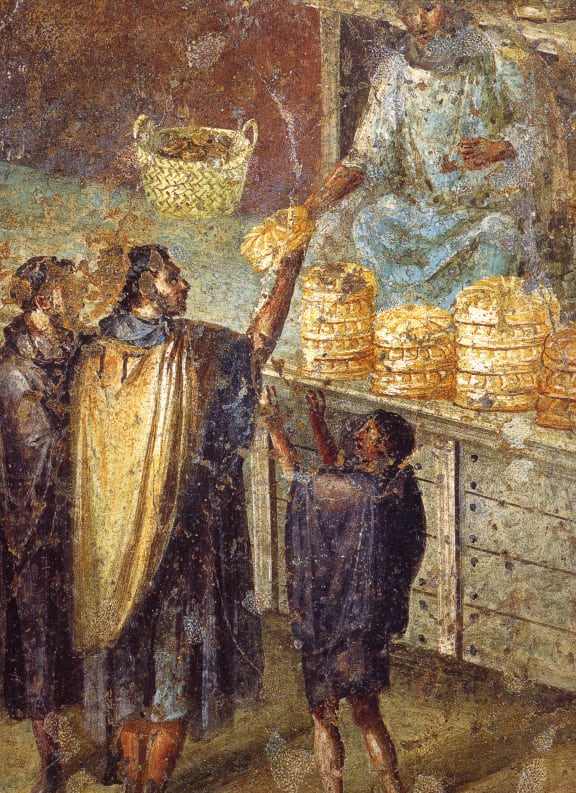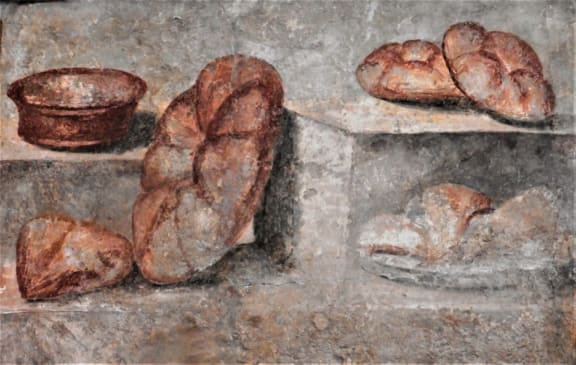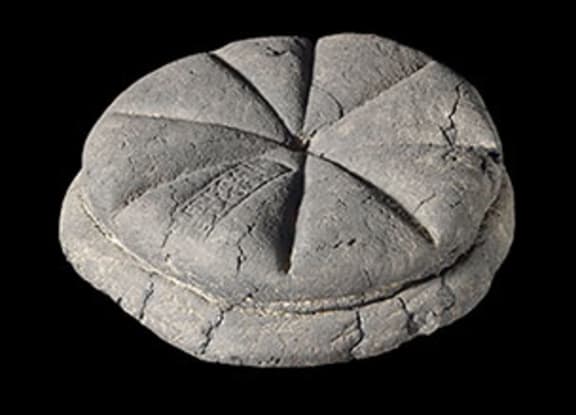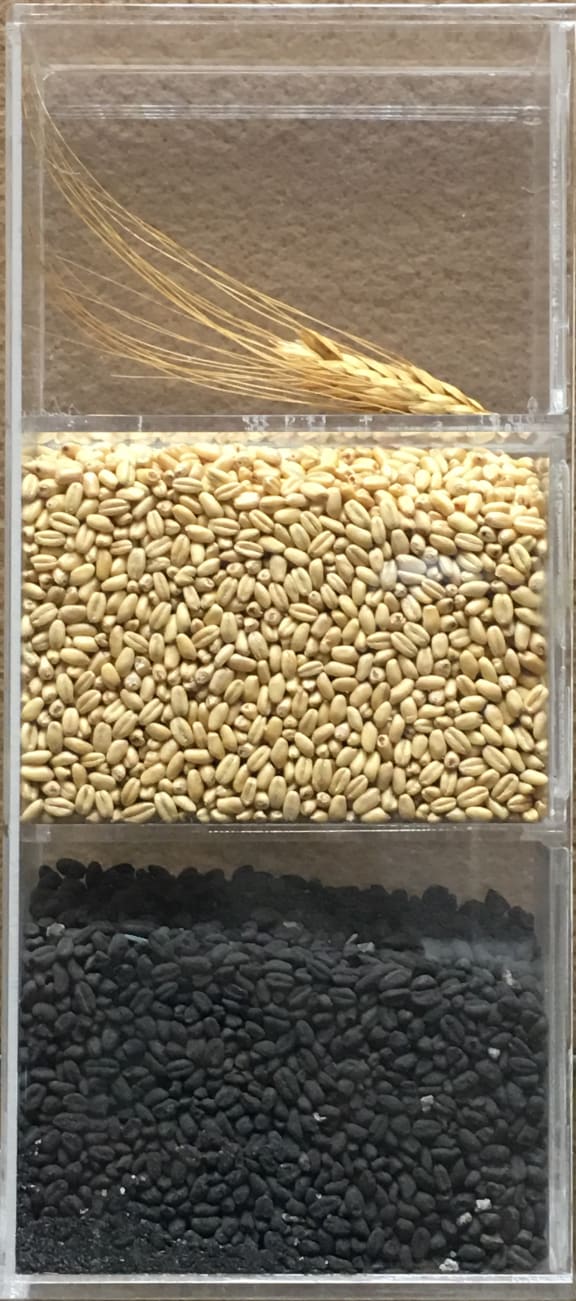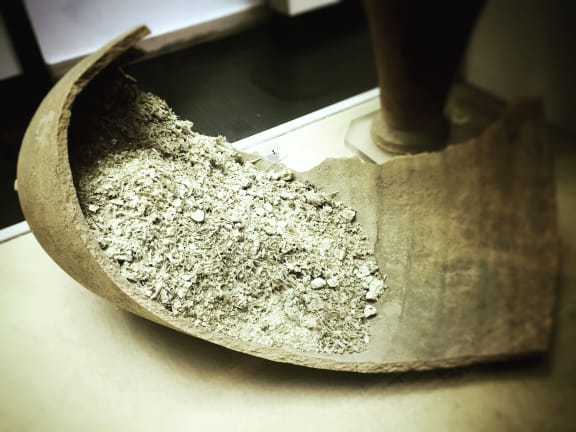This Way Up for Saturday 17 March 2018
This Way Up for Saturday 17 March 2018
Edible archaeology: recreating Pompeii's bread, pro cycling's latest doping scandal, robotic recruitment and Bits+Bytes (Nissan Leaf battery warning, Facebook and politics, flying taxis's NZ trial, You Tube moderators and RealMe ID system).
Edible archaeology: recreating Pompeii's bread
Farrell Monaco researches and recreates recipes from ancient history.
Her culinary exploration ranges from cheese made to Roman farmer Columella's recipe, to Roman porridge, and Cato the Elder's Globi – that’s deep fried honey-soaked ricotta and wheat balls.
Monaco, an experimental archaeologist, documents the recipes on her blog Tavola Mediterranea.
One of her most memorable food recreations is of an unusual bread found in the ruins at Pompeii, the town of 15,000 people that was buried in ash by the eruption of Mount Vesuvius nearly 2000 years ago.
It’s one of the most well preserved archaeological sites in the world and offers up a huge amount of data on food and drink, Monaco says.
Forty commercial bakeries have been recorded along with household hearths and braziers used for cooking, while frescos illustrate the food of the time.
In one bakery alone, eighty loaves of the bread panus quadratus were pulled out of the ovens.
“Bread was the centrepoint of the daily diet … along with olive oil, and wine of course,' Monaco says.
Porridge was being made 9000 years ago, and we still make it today. "The Romans ate porridge throughout the entire day, and they made it savoury or sweet, mixed fruit or meat in it. We still eat it – it ain’t broke so we didn’t fix it.
“Same with bread; in artisanal settings is made the same way that our ancestors made bread – with starter, water, and flour and a little pinch of salt.
“What has changed … is the Romans had a very deep connection to their food and their food supply … slaughtering animals, for example, they were connected to where their meat came from. We have a firm separation now with respect to where our meat comes from … we don’t know the process with which it comes to us and we don’t want to know.”
Get Farrell Monaco’s recipe for panus quadratus here.
Pro cycling's latest doping scandal

Brazil cycle race (Photo by Maico Amorim on Unsplash) Photo: (Photo by Maico Amorim on Unsplash)
As we head into the European professional cycling season, pro cycling is still dominated by rumours of drug taking and cheating thanks to a select committee report in the UK that's just been published.
The report concluded Sir Bradley Wiggins had taken performance enhancing drugs to win the 2012 Tour de France under the guise of treating asthma. The report also questions how Team Sky became so dominant in pro cycling, and claims the team has abused the anti-doping system and allowed riders to take drugs.
Cycling journalist and host of the Cycling Podcast Richard Moore has been following the Team Sky controversy and talks about the implications of the report and how ongoing doping investigations could affect upcoming races.
Hired by an algorithm? Robotic recruitment
Algorithms and artificial intelligence are being used to screen job candidates. The problem for jobseekers is whether the system is open or fair - and they're starting to fight back.
Tech businesses are offering automated services to the 'pre-hire assessment' recruitment market, saving global companies the time and expense of sifting through large numbers of job applications.
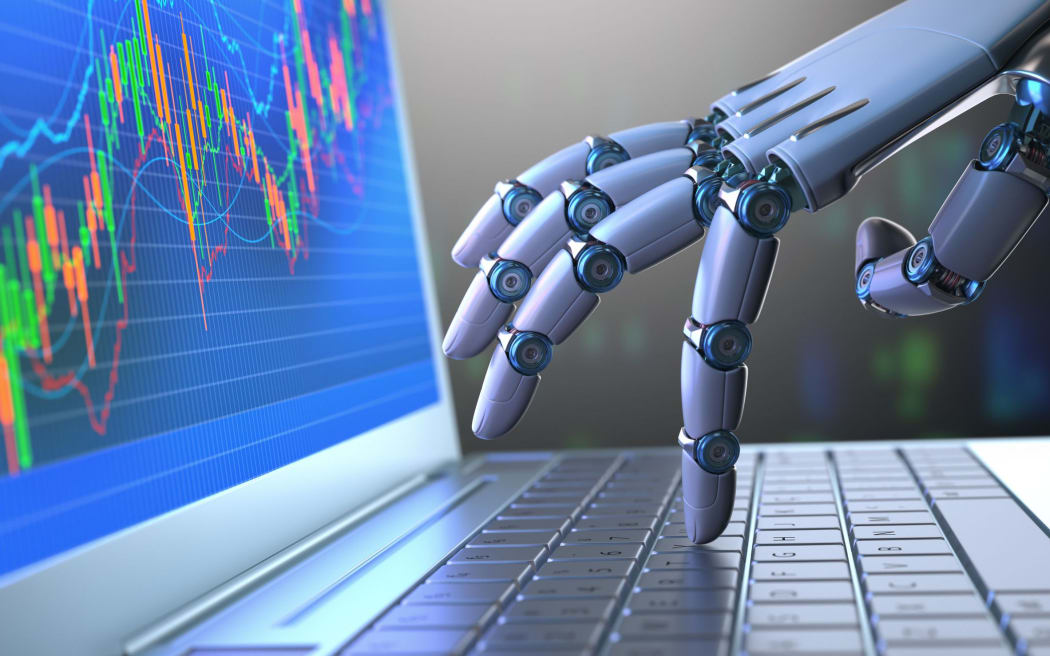
Photo: 123RF/ ktsdesign
Stephen Buranyi, who’s written on the emerging trend for The Observer, says it’s “early days” and many in the recruitment industry are sceptical, but companies using the technology think it’s improving their hiring.
“The companies that have been using the technology do seem to think that it is by whatever metrics they’re using, producing a better hiring process.
Buranyi says the artificial intelligence-based system uses personality tests but also analyses facial expression, tone of voice, speed of speaking and the words people are using.
To find a model for an employee they want, the tests are given to people already working for a company and the results are correlated to the job performance.
That gives them "an example of what a good employee looks like" so the test can be given to job applicants.
“The programme might not know why a certain facial expressions or certain answers predict good performance in employees but they do know that good employees of the company behave in that way.”
Buranyi says the AI-based tests and algorithms are considered the private intellectual property of companies that make them, so any research or evidence will remain in house.
But companies are “diving in more and more”, he says.
“The companies that have been using the technology do seem to think that it is by whatever metrics they’re using, producing a better hiring process,” he says.
There are worries about hidden biases. “The bias thing is real,” says Buranyi, “but of course people who are proponents of this sort of technology will argue that humans are extremely biased, and biased in some pretty dark ways, and by using this sort of technology you can circumvent that.
“If you are noticing the programme is selecting too many men or too many non-white applicants you can fix that.”
It can be difficult to find out how a bias in a programme is working because most are private property. “It’s not in any way transparent to anyone outside the programme.”
Automated hiring also raises questions of equality of access to information and openness about decisions.
“When there’s a decision …can you get someone to explain to you how it happened – especially if it’s something as serious as you being turned down for a loan or a job.”
In the European Union, the General Data Protection Regulation (GDPR), which is to come into force this year will allow people to challenge decisions made automatically “and appeal to have a human intervene in these things.”
Job counsellors at universities might be preparing people for this type of recruitment but other job seekers, who don’t have the same resources, go in blind, he says.
The programmes are "gameable", he says. Internet forums are springing up where people trade tips and answers to questions, and and younger people especially are finding ways to get through the systems.
“To their credit they do a very good job – they approach it very scientifically. They make fake accounts they do as many applications as possible they try to see what works and what doesn’t.”
In his Observer article Buranyi writes: “One HR employee for a major technology company recommends slipping the words “Oxford” or “Cambridge” into a CV in invisible white text, to pass the automated screening."
Bits+Bytes: battery warning for EV drivers

Photo: Pixabay CC0 Creative Commons
This week, a warning about electric cars: a group of New Zealand citizen scientists claims to have discovered a problem with the battery powering one model of the world's best-selling electric vehicle, the Nissan Leaf.
Also, why Facebook has banned political party pages in the UK.
And in other news, flying taxis are being trialled here in New Zealand: Kitty Hawk, the Silicon Valley startup backed by Google co-founder Larry Page, has done a deal with the government to test-fly "all-electric take-off and landing products".
So what technology are they using and does it have the potential to bypass congested roads?
Plus workers paid to sift through and remove disturbing content on YouTube will be limited to working 4 hours a day to protect their mental health.
And your tech questions answered: listener Andrew asks why can't we use the government's RealMe identification system in our dealings with the tax department?
Peter Griffin helps us to navigate the world of technology with the latest news from the digital world.
If you have a question for us do please email us at bits@radionz.co.nz or send us a tweet @RNZbitsandbytes.






